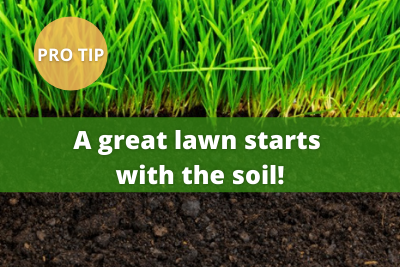All of us want a lush and thick lawn and we’ve got the basics down on how to get it: seeding, watering, cutting. But tending to what’s going on below ground — soil structure and soil texture — is just as important and can make or break a beautiful lawn season after season.
Your soil is made up of clay, sand, and organic material, but it is the structure or shape of this material that determines how water and air move through it.
Well-structured soil is granular or looks like the top of a crumb cake; blocks or chunks is considered poorly-structured soil. The difference will have an effect on how grass and plant roots grow and whether drainage causes soil erosion from surface runoff. Soil made up largely of clay retains water and nutrients. Sandy soil is the opposite and needs help with moisture and nutrient retention.
Cultivating, tilling, and aerating should be done regularly. Soil additions such as composts, peat, and other material can improve the structure and texture. Landscaping professionals can test your soil and give expert advice on the proper material to add so that the soil is at its most effective in helping your root system year-round.
“A lot of problems we run into is how to make sure you’ve got something that is conducive to growing what you want,” said Benjamin Marsh, owner of Marsh Brothers Lawns & Landscaping in Winston-Salem, N.C. “That’s grass at a certain pH range, the texture of the soil and amending it if, say, you need a more acidic environment. We will figure out how to re-acidify the soil and bring it to a range where things will grow and fixing things from the bottom up.”
Your independent lawncare dealer can give you recommendations on expert landscapers in your community. Click here to search for dealers near you.

